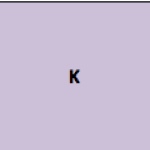Information
-
Audit Title
-
Document No.
-
Client / Site
-
Conducted on
-
Prepared by
-
Location
-
Personnel
Structure and Properties of Matter
-
All substances are made from some 100 different types of atoms, which combine with one another in various ways.
-
Pure substances are made from a single type of atom or molecule; each pure substance has characteristic physical and chemical properties.
-
Gasses and liquids are made of molecules or inert atoms that are moving about relative to each other.
-
In a liquid, the molecules are constantly in contact with others; in a gas, they are widely spaced except when they happen to collide. In a solid atoms are closely spaced and may vibrate in position but do not change relative locations.
-
Solids may be from molecules, or they may be extended structure with repeating subunits.
-
The changes of state that occur with variations in temperature or pressure can be described and predicted using these models of matter.
-
The term "heat" as used in everday language refers both to thermal motion and radiation.
-
Temperature is not a measure of energy; the relationship between the temperature and total energy of a system depends on the types, states, and amounts of matter present.
Chemical Reactions
-
Substances react chemically in characteristic ways. In chemical process, the atoms that make up the original substances and these new substances have different properties from reactants.
-
Total number of each type of atoms is conserved and thus the mass does not change.
-
Some reactions release energy, other store energy.
-
The chemical reactions by which plants produce food molecules (sugars) requires energy output to occur. In this reaction carbon dioxide and water combine, to form carbon-based organic molecules and release oxygen.
-
Both burning of fuel and cellular digestion in plants and animals involve chemical reactions that release energy. In these processes, complex molecules containing carbon react with oxygen to produce carbon dioxide and other materials.
Forces and Motion
-
For any pair of interacting objects, the force exerted by the first objects, the force exerted by the first object on the second is equal in strength to the force of the second object exerts on the first, but in the opposite direction.
-
The motion of an object is determined by the sum of the forces acting on it.
-
The greater the mass of the object, the greater the force needed to achieve the same change in motion. For any given object a larger force causes a larger change in motion.
-
Forces on an object can change its shape or orientation.
-
All positions of objects and the directions of forces and motions must be described in an arbitrarily chosen reference frame and units of size. In order to share information, these choices must be clearly stated.
Interactions of Forces
-
Electric and magnetic forces can be attractive or repulsive and their sizes depnd on the magnitudes of the charges, currents, or magnetic strengths involved and on the distances between the interacting objects.
-
Gravitational forces are always attractive. There is a gravitational force between any two masses, but it is very small except when on or both of the objects have large mass.
-
Long range gravitational interactions govern the evolution and maintenance of large-scale systems in space and determine the patterns of motion within those structures.
-
Forces that act at a distance can be explained by force field that extend thorugh space and can be mapped by their effects on a test object.
-
A stable system is one in which any small change results in forces that return the system to its prior state.
-
Many systems, both natural and engineered, rely on feedback mechanisms to maintain stability, but they can function only within limited range of conditions. With no energy inputs, a system starting out in an unstable state will contineu to change until it reaches a stable configuration.
Energy
-
Motion energy is properly called kinetic energy; it is proportional to the mass of the moving object and grows with the square of its speed.
-
A system of objects may also contain stored (potential) energy depending on their relative positions.
-
Stored energy is decreased in some chemical reactions and increased in others.
-
Temperature is a measure of average kinetic energy of particles of matter. The relationship between the temperature and the total energy of a system depends on the types, states, and amounts of matter present.
-
When the motion energy of an object changes, there is inevitable some other changes in energy at the same time.
-
The amount of energy transfer needed to change the temperature of a matter sample by a given amount dpends on the nature of the matter the size of the sample, and the environment.
-
Energy is transferred out of hotter regions or objects and into colder ones by the process of conduction, convectin, and radiation.
-
Machines can be made more efficient, that is, requires less fuel input to perform a given task, by reducing friction between their moving parts and thorugh aerodynamic design. Friction increases energy transfer to the surrounding environment by heating the affected area.
Waves and Electromagnetic Radiation
-
A simple wave has a repeating pattern with specific wavelength, frequency, and amplitude.
-
A sound wave needs a medium thorugh which it is transmitted.
-
Geologists use seismic waves and their reflections at interfaces between layers to probe structures deep in the planet.
-
When light shines on an object, it is reflected, absorbed, or transmitted through the object, depending on the object's material and frequency of light.
-
The path that light travels can be traced as straight lines, except on surfaces between different transparent materials where the light path bends.
-
A wave mdoel of light is useful for explaining brightness, color, and the frequency-dependent bending of light as a surface between media (prisms) however, because light can travel though space, it cannot be a matter wave. Like sound or water waves.
-
Appropriately designed technologies make it possible to detect and interpret many types of signals that cannot be sensed directly. Designers of such devices must understand both the signal and its interaction with matter.
-
Many modern communications devices use digitized signals as a more reliable way to encode and transmit information.










